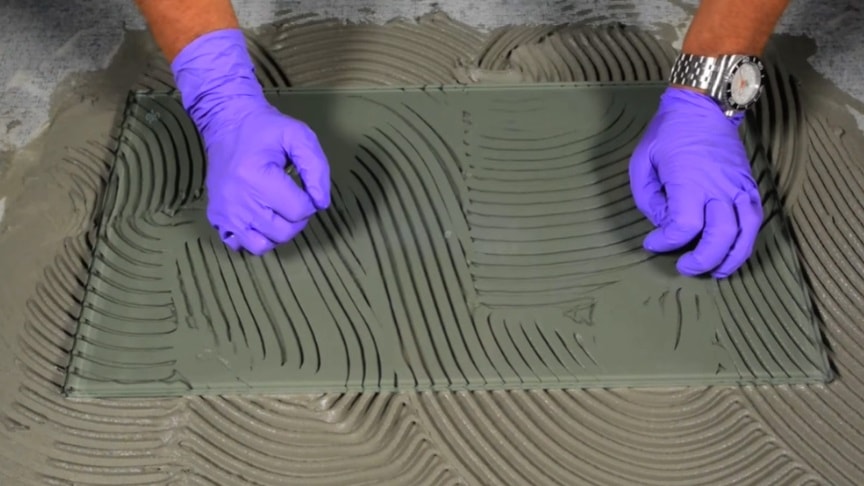How to install tile the right way! Learn NTCA-approved, correct trowel techniques to set large format tile and how to create a stronger bond between the tile and the substrate. Prevent crack transmission, lippage, tile breakage and other costly tile installation repairs.
source/image: CustomBuildingProd
Tile and stone are very durable materials that can and should last a lifetime. When tiles break, more often than not, it’s due to issues with the substrate or the installation method. The way you trowel mortar for setting tile makes a big difference. Porcelain tiles, in particular, can withstand extra heavy service conditions.via/read more: CustomBuildingProd
It takes a lot of impact or point load to cause bond loss when installed correctly over a sound substrate. The mortar under this tile was installed using the correct trowel technique. Unfortunately, many tiles are being installed incorrectly, especially very large tiles, and this can result in costly breakage! You get the job done more quickly, but you can’t get proper mortar coverage.
Advertisement
Air gets trapped with nowhere to go and leaves the tile unsupported. Swirling the mortar causes voids where the tile is not bonded to the substrate. These voids can result in cracked tile and bond failure under normal use but especially under point load or impact. A lack of perimeter and other movement joints affects well bonded tile so imagine when half – or even less – of a tile is adhered. According to the American National Standards Institute and the TCNA Handbook, tile requires a minimum of 80% mortar coverage in interior applications — 95% for exteriors and wet environments. Natural stone tile requires 95% coverage in all areas.//CustomBuildingProd











